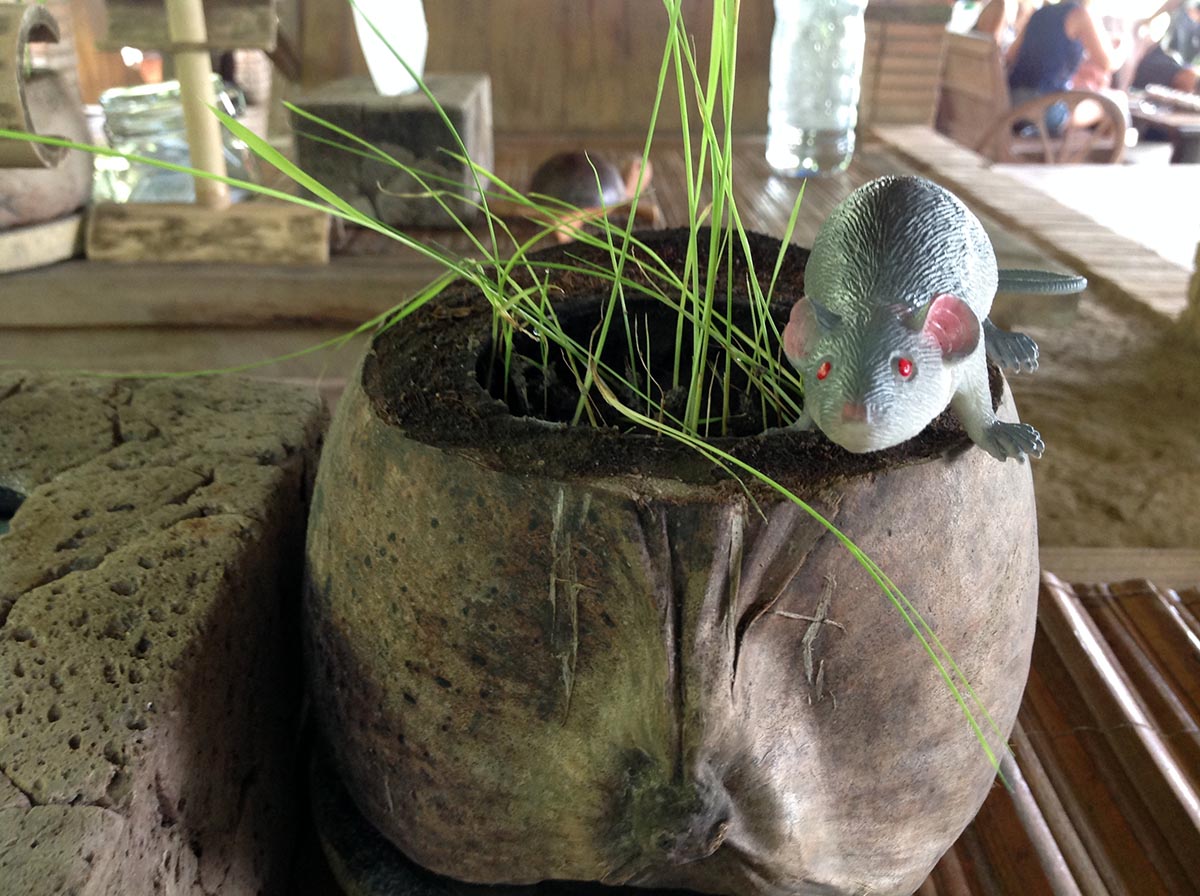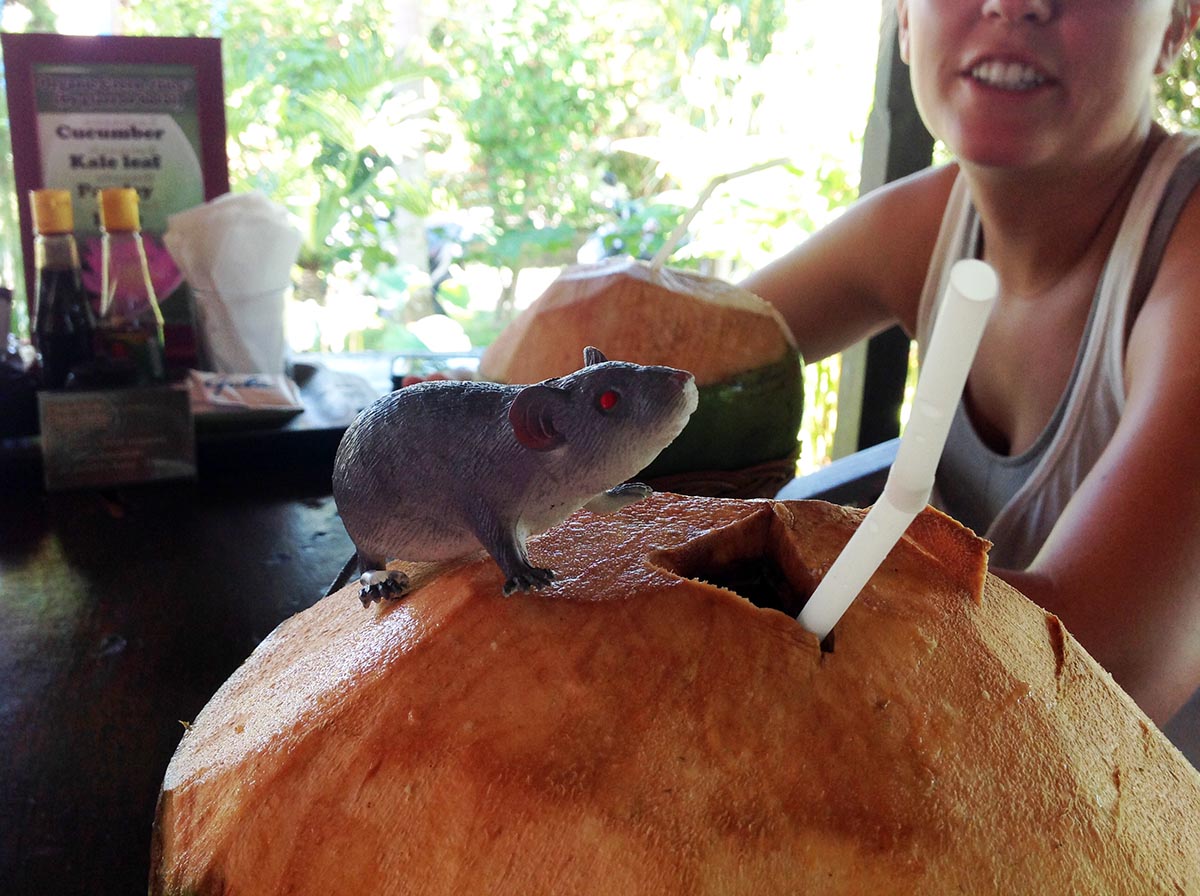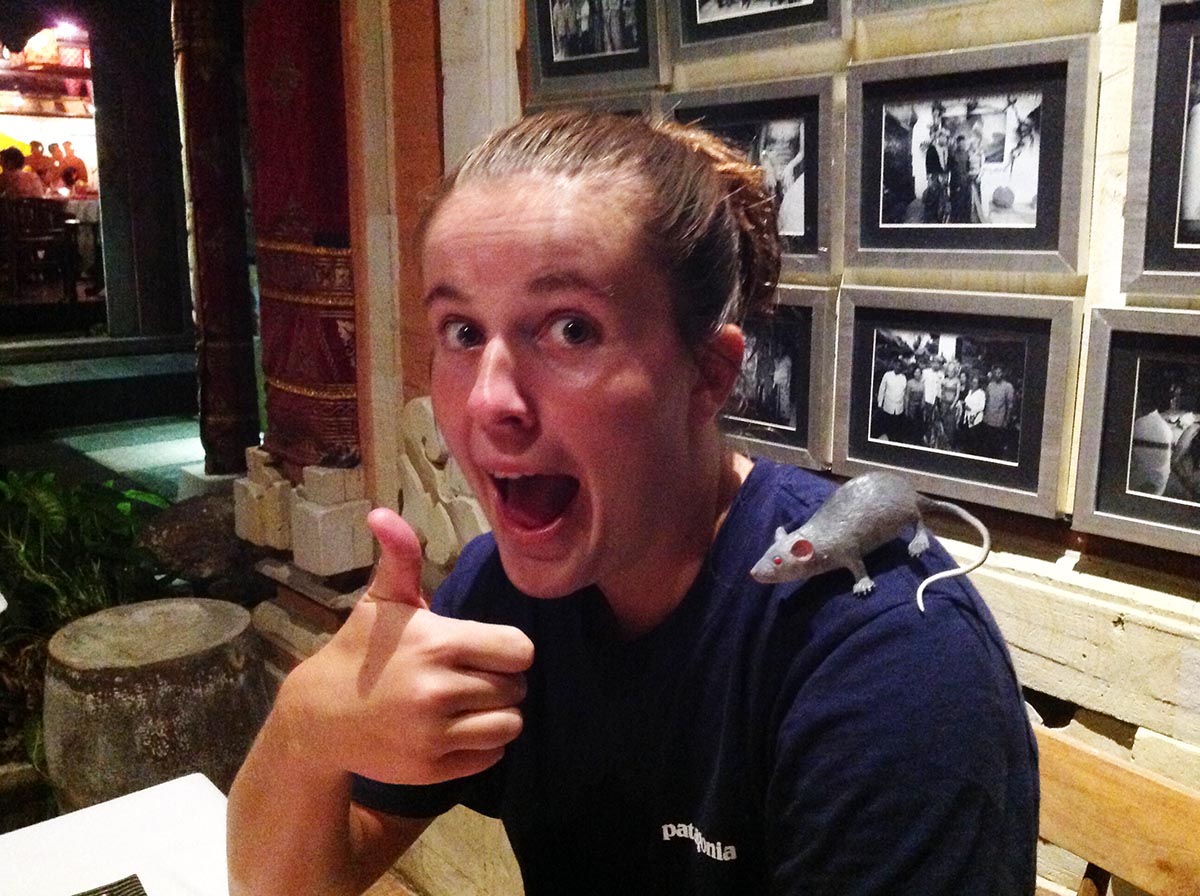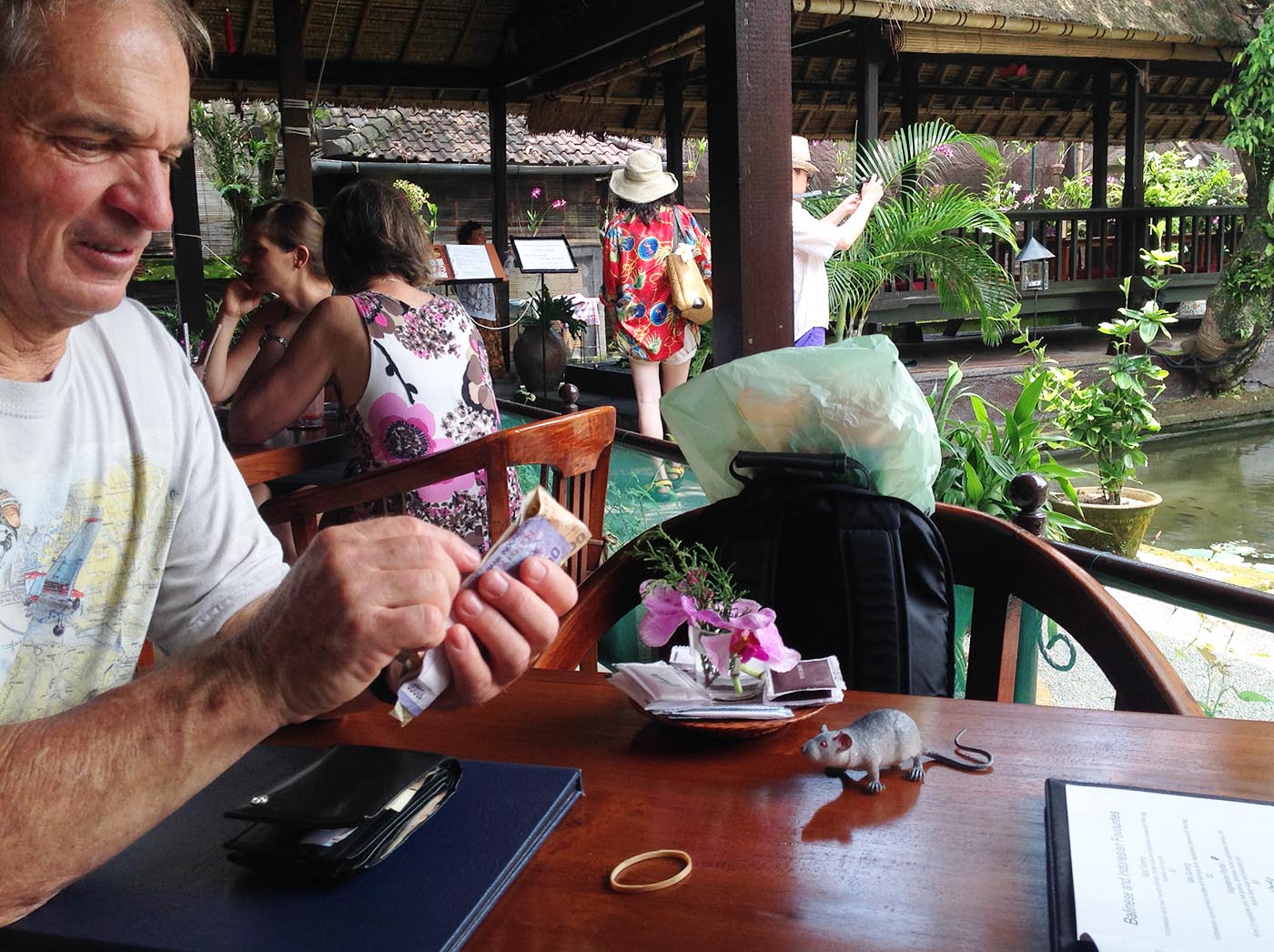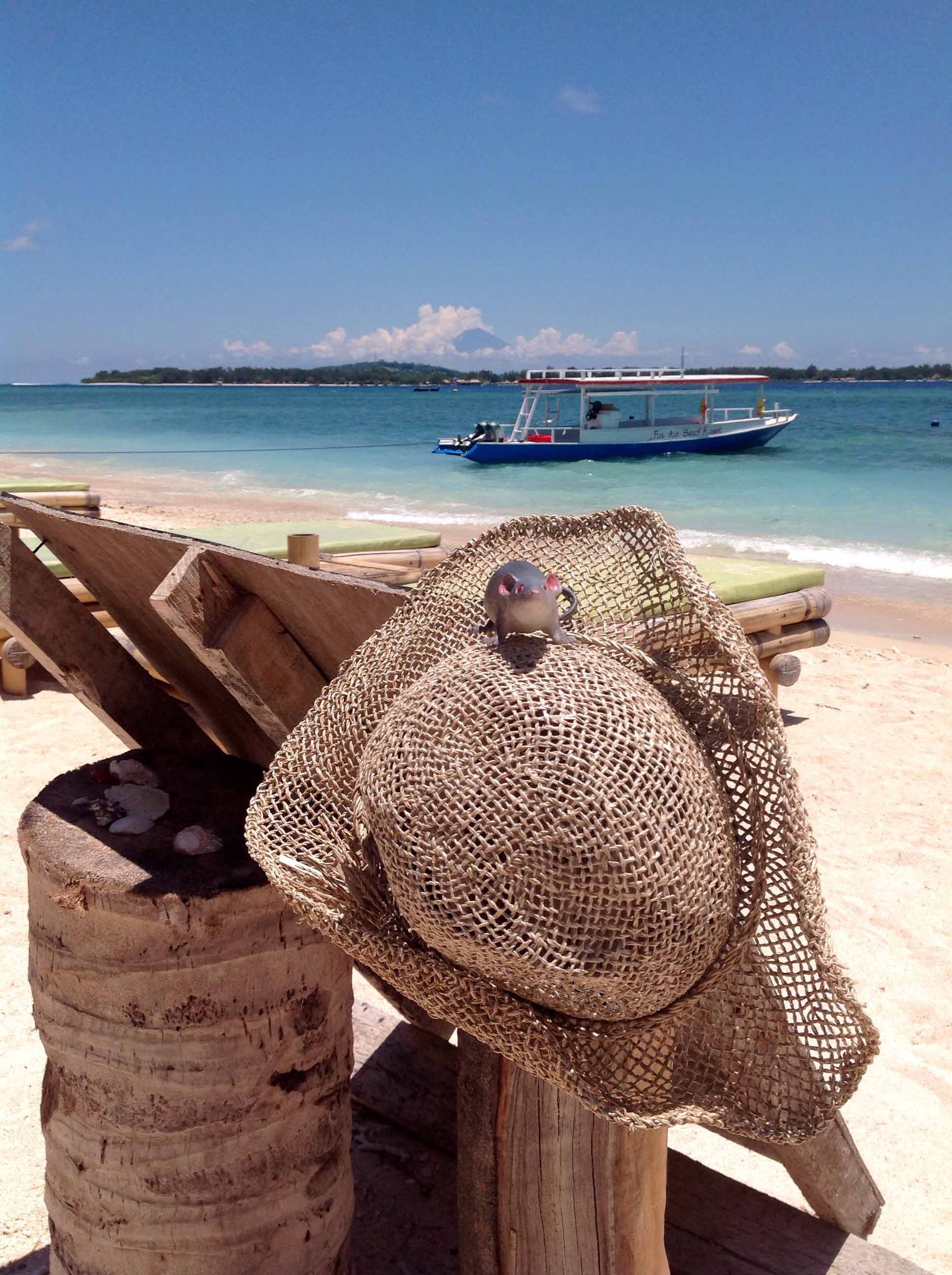Cagney the rubber rat, our department’s staff mascot and icon of sustainability, has travelled extensively since he made his debut in 2007 (source). He accompanied grad student Laura Harrison to New Zealand that year and information technologist Jon Hall to the US Virgin Islands in 2008, and his latest geographical jaunt has been to Bali where he’s accompanying Mo Lovegreen, our Executive Officer, and her husband Jeff and daughter Piper on a vacation at the moment.
Rats are the most successful animal species in Java and Bali, although only 4 of the 21 species present significant problems to humans (source). These problems include crop losses (especially rice), the spread of disease, and a negative impact on tourism: “Did no one else have issues with rats? We must have seen hundreds of them…at the beaches, in the restaurants, shops, hotels, everywhere! Granted, we were there a few years ago, but if anyone even says “Bali”, I just think of a giant rat. I’ve been to beaches in Thailand, Cuba, Guatemala, and other 3rd world paradises where stray dogs and cats are common, but never have seen anything like the rats in Bali” (source).
With a daughter named Piper, it’s somewhat ironic that the Lovegreens would take a rat into Bali rather than leading the pests out of the place (think The Pied Piper of Hamelin)! Mo explains it this way: “About a week before my trip, Cagney appeared in my room. First he was on my lamp, then he was by the sink. Next he appeared in one of my shoes, and I got the message: he was ready for another adventure” (email from Mo on March 19, 2015). And he’s having one, as you can see by the photos that Mo has sent from Ubud, Bali’s cultural center.
By the way, the Monkey Forest that Mo refers to in the first caption is “the Ubud Monkey Forest, a nature reserve and Hindu temple complex in Ubud, Bali, Indonesia. Its official name is the Mandala Suci Wenara Wana (Sacred Monkey Forest Sanctuary), and its name as written on its welcome sign is the Padangtegal Mandala Wisata Wanara Wana Sacred Monkey Forest Sanctuary. The Ubud Monkey Forest is a popular tourist attraction and is often visited by over 10,000 tourists a month.
[…]In 2011, approximately 605 crab-eating macaques (Macaca fascicularis) – 39 adult males, 38 male sub-adults, 194 adult females, 243 juveniles, and 91 infants – lived in the Ubud Monkey Forest. They are known locally as the Balinese long-tailed monkey. The park staff feeds the monkeys sweet potato three times a day, providing them with their main source of food in the park, although bananas are for sale in the park for tourists wishing to feed the monkeys, and the monkeys also feed on papaya leaf, corn, cucumber, coconut, and other local fruit. For the sake of the monkeys’ health, visitors are prohibited from feeding them snacks such as peanuts, cookies, biscuits, and bread. […]If a human does not provide the food the monkeys demand or does not provide it quickly enough, the monkeys occasionally will bite the human; in fact, monkeys bite tourists daily and videos of many of these attacks can be found on YouTube. Monkey bites are a very serious medical event given the variety of viruses monkeys carry that can be transferred to humans” (Wikipedia: Ubud Monkey Forest). Cagney isn’t the only one that should be worried about “those crazy monkeys”!Editor’s note: Cagney is also the mascot of the UCSB Laboratory Research and Technical Staff (LabRATS) which promotes the evaluation of laboratory procedures and implementation of performance standards to assist laboratories in becoming more sustainable. LabRATS began in 2004 and has evolved from an informal group into a major program which enlists a multitude of interns and undergraduate volunteers to connect researchers campus-wide.
In 2006, the program received a grant from the Lawson Valentine Foundation which enabled it to hire undergrad interns, and it completed its first UCSB laboratory assessment in July 2006. In 2007, the journal Science focused on sustainable science and featured UCSB’s LabRATS program in an article titled “This Man Wants to Green your Lab” (Science, 318, [5847], 39-42), and in 2008, it was honored by the International Institute for Sustainable Laboratories and R&D Magazine with an Organization Award at the first-ever Go Beyond Awards which honors individuals, organizations, projects, and laboratory manufacturers that “go beyond” the status quo to minimize the environmental impacts of laboratory and other high-technology facilities and laboratory equipment (see the July 25, 2012 article, UCSB LabRATS in the News).
Article by Bill Norrington


